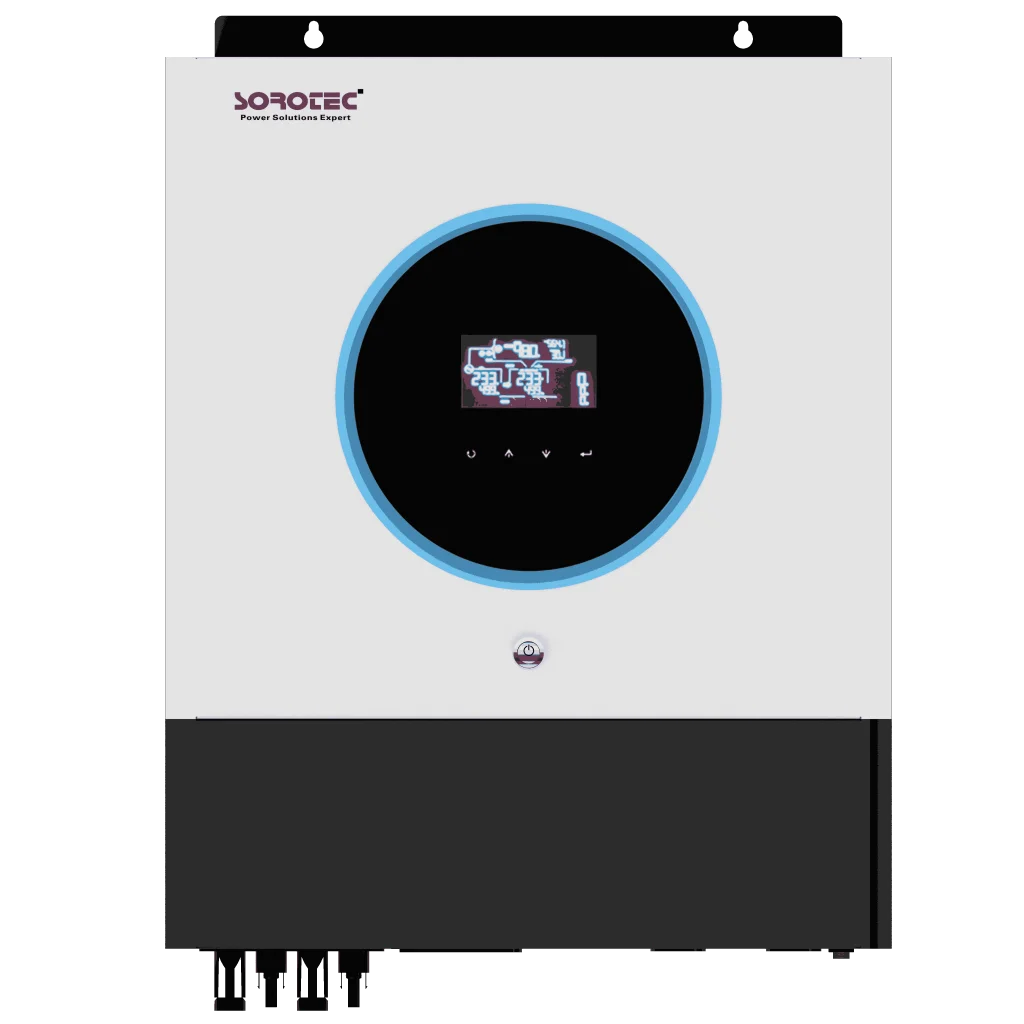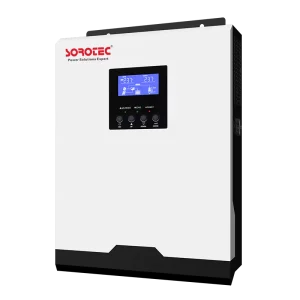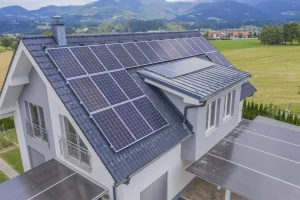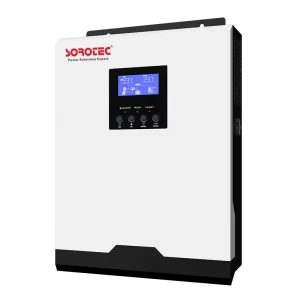Introduction
Power outages don’t ask for your permission. They come during a late-night Zoom meeting, in the middle of a factory shift, or while a surgeon is halfway through using a piece of sensitive equipment. When the lights flicker, what keeps your business alive is not luck—it’s the backup power system you’ve put in place.
Two words often float around in this discussion: UPS and inverter. At first glance, they sound like cousins, and yes, both help when the grid drops out. But they don’t behave the same way. In fact, confusing the two can be expensive or even risky for certain applications.
SOROTEC, a company with nearly two decades in power electronics, has seen this confusion play out across data centers, hospitals, and even small retail shops. Let’s break down how UPS and inverters actually work differently in real power backup scenarios.
What Is an Inverter?
Definition and Core Function
An inverter is essentially a translator. It takes the direct current (DC) stored in batteries (or solar panels) and turns it into alternating current (AC), the type of electricity your machines and lights actually use.
Inverters don’t usually act alone. They sit as part of a bigger system, paired with batteries, solar arrays, or even diesel generators. Imagine it like the stage crew at a concert: not flashy, but the whole show falls apart without it.
Pros and Limitations
- Longer backup: With a big enough battery bank, an inverter can keep your home or office running for hours.
- Scalable: You can add more batteries or larger units if your demand grows.
- But—there’s always a but—the switching time matters. Most inverters take 300–500 milliseconds to kick in after the grid goes down. For your laptop, maybe that’s fine. For a medical ventilator or a server farm? That tiny hiccup could mean downtime or worse.
- Another drawback: inverters on their own don’t usually clean or regulate the power. If the incoming current is messy—voltage spikes, frequency drifts—they just pass it along. Sensitive devices may not appreciate that kind of rough ride.
What Is a UPS?
Definition and Core Function
UPS stands for Uninterruptible Power Supply, and the name says it all. Unlike inverters, a UPS is built to act instantly. We’re talking transition times in milliseconds, sometimes so fast that your equipment doesn’t even notice the grid blinked.
At its core, a UPS has three main parts:
- A rectifier that charges its internal battery,
- A battery that stores energy,
- An inverter that outputs clean AC power.
In a sense, a UPS has a mini inverter inside, but wrapped with protective layers.
Types of UPS Systems
- Offline/Standby UPS – Basic, cheaper models. Power flows directly from the grid until failure, then battery steps in. Good for personal PCs or simple devices.
- Line-interactive UPS – Adds voltage regulation, better suited for offices or retail shops with frequent fluctuations.
- Online (Double Conversion) UPS – Gold standard. Power is always routed through the UPS, which means zero interruption. Hospitals, telecom hubs, and data centers often don’t settle for anything less.
Advantages in Protection
A UPS isn’t just a backup, it’s a filter. It shields against surges, brownouts, and harmonic distortion. In industries like finance or semiconductor manufacturing, even a minor voltage drop can cost thousands in seconds. That’s why companies often treat UPS units as insurance policies rather than just hardware.
UPS vs Inverter: Key Differences
Switching Time
- UPS: <10 milliseconds, often instant.
- Inverter: 300–500 milliseconds, noticeable in critical systems.
- Think of it like two drivers at a green light: one reacts instantly, the other pauses to check their phone before moving.
Backup Duration and Energy Source
- UPS: Usually lasts minutes, sometimes up to an hour. Enough time to safely shut down or switch to a generator.
- Inverter: Duration depends on your battery size. With the right bank, it can run for hours.
Protection and Power Quality
- UPS: Smooth, clean, regulated electricity.
- Inverter: Provides AC, but usually without power conditioning.
Components and Charging Architecture
- UPS: Comes ready with rectifier, inverter, charger, switch—all in one box.
- Inverter: Needs external charger and larger ecosystem.
Cost and Complexity
UPS: Higher upfront cost per unit, especially online double-conversion types.
Inverter: Generally cheaper, though once you add batteries and accessories, costs creep up.
Use Cases: Which to Choose When?
For Sensitive Equipment and Data Centers
Go for UPS. When every millisecond counts—servers, telecom switches, lab equipment—there’s simply no room for even a 0.5-second blackout.
For Homes or Long-Duration Backup
Choose inverters with batteries. They make more sense when the goal is to keep your home comfortable through a three-hour power cut or to run small businesses in areas with unstable grids.
Hybrid or Integrated Solutions
Here’s where SOROTEC’s expertise shines. Some modern inverters now include UPS functionality, delivering the best of both worlds. For example, the REVO VM series supports fast switching and smart load management, so homeowners don’t have to juggle separate systems.
In commercial setups, it’s not unusual to see UPS units paired with larger inverters. The UPS keeps critical systems alive instantly, while the inverter and storage system take over for the long haul. A client in Africa running a rural clinic adopted exactly this: a rack of UPS units protecting surgical tools, with inverters + solar storage powering lighting and refrigeration.
Summary Table
| Feature | UPS | Inverter |
| Switching time | <10 ms (instant) | 300–500 ms delay |
| Backup duration | Minutes | Hours (with large battery) |
| Protection level | High (voltage, surge) | Low, basic AC only |
| System components | All-in-one | Needs external parts |
| Cost | Higher | Lower to medium |
Conclusion
UPS and inverters are both vital, but they play different games. A UPS is like a sprinter—fast, decisive, no time wasted. An inverter is more of a marathon runner—slower to start, but capable of going the distance.
For many businesses, the smartest choice isn’t one or the other. It’s understanding where each fits. Critical devices get a UPS. Non-critical loads ride on an inverter system. Together, they build resilience.
At SOROTEC, we’ve built solutions across all of these scenarios—from compact UPS for banks in Europe to high-capacity hybrid inverters powering factories in Southeast Asia. The bottom line: don’t just buy hardware. Think about your real risks, your downtime costs, and your local power situation. That’s how you choose between UPS and inverter.
FAQs
Q1. Can I run all my appliances on a UPS instead of an inverter?
A: Not really. UPS systems aren’t designed for heavy loads like air conditioners or refrigerators. They’re meant for critical electronics. For whole-home backup, inverters with batteries are more practical.
Q2. Why is my inverter slower to switch than my friend’s UPS?
A: That’s by design. Inverters usually take a fraction of a second to engage because they aren’t always “on” like online UPS systems. It’s not a fault, just how the technology works.
Q3. Do modern hybrid inverters remove the need for a UPS?
A: Sometimes yes, sometimes no. A high-end hybrid inverter can cover both roles, especially in residential setups. But in industries where milliseconds matter—finance, healthcare, data centers—dedicated UPS units are still the safer bet.









